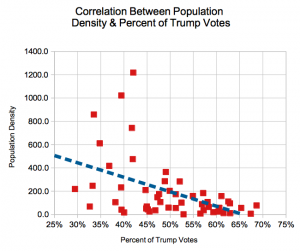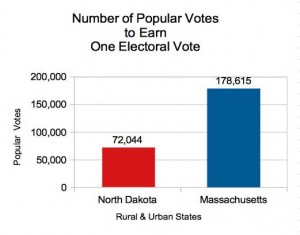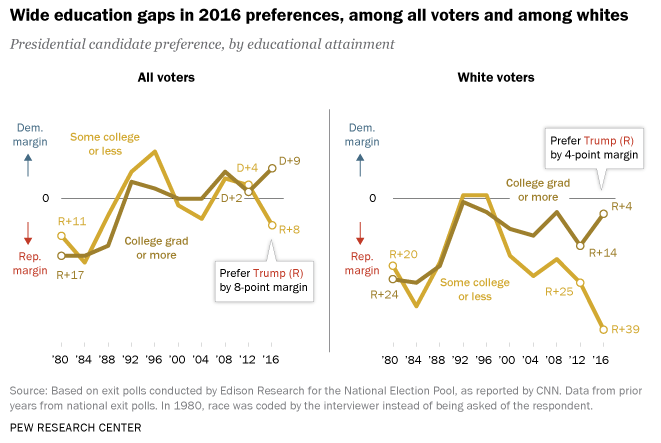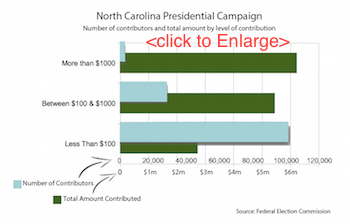| “Playing with data is as fun as playing with Legos” |
Even though I suspect that most Americans, Republican and Democrat, believe in mostly the same things. The political gap seems to have much to do with your neighborhood – that is to say, how far you live from your neighbors.
I did a little figuring with the population density of each state and the percent of votes cast by its residents for Donald Trump. The correlation coefficient (yes, I’m college educated) was -.46, which apparently is a moderate downhill or negative relationship (see chart #1). In other words, the higher the population density (urban) the less likely you and your neighbors were to vote for Trump. The lower the density (rural), the more likelihood of Trump votes in your neighborhood.

But this gap seems to have been magnified by the U.S. Constitution, as the document describes the Electoral College. North Dakota, 47th in density ranking, cast 216,133 votes for Trump. That amounted to only 72,044 votes for each of the state’s 3 electoral votes for the Republican candidate. In Massachusetts, the 3rd most densely populated state, it took over 100,000 more votes for Clinton (178,615) to earn one of the state’s 7 electoral votes for the Democrat (see chart #2).

What surprises and disturbs me is the education gap. The graph below, from Pew Research Center, indicates that among all voters, those with college degrees or more voted for Hillary Clinton by 9 points, while voters with some college or less chose Donald Trump by 8 points. The education gap widens when looking at white voters only, a gap of 35 points.1
There are many ways to read meaning into this, and I’m going to be thinking pretty hard about it. But we might assume that free college education, as provided in many European countries, is pretty much off the table here at home.

1 Tyson, A., & Maniam, S. (2016). Behind Trump’s victory: Divisions by race, gender, education. Retrieved from Pew Research Center website: http://www.pewresearch.org/fact-tank/2016/11/09/behind-trumps-victory-divisions-by-race-gender-education/

